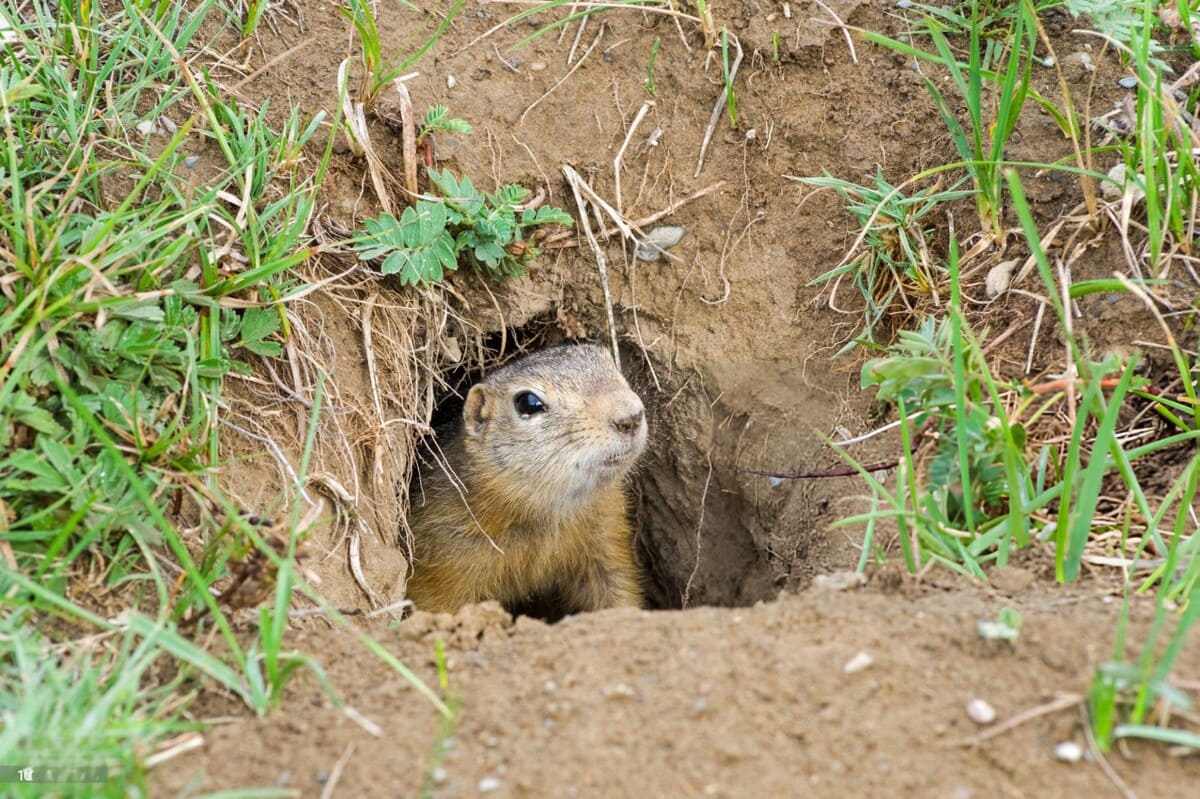Is It Legal to Kill Gophers in California? The Complete Guide

In California, it is legal for homeowners and property owners to kill gophers through approved methods like trapping, poisoning, and fumigation. However, there are regulations in place regarding the types of methods allowed and how trapped gophers must be handled.
This Inclusive guide will cover everything you need to know about legally controlling gophers in California, including:
- Understanding gopher behavior and the damage they cause
- The legal status of gophers in the state
- Permitted lethal control methods
- Restrictions on certain control tactics
- Non-lethal gopher management options
- Best practices for safe and effective control
- Special cases and nuances in the regulations
By the end, you’ll have a clear understanding of what’s allowed regarding gopher control on your California property.
What are Gophers and Why are They a Problem?
Gophers, specifically pocket gophers of the Thomomys genus, are burrowing rodents commonly found across California. These small mammals get their name from the fur-lined external cheek pouches they use to carry food and nesting materials.
While their burrowing activities play a role in aerating and mixing soils, gophers are considered pest animals due to the extensive damage they can cause in:
Residential Areas
- Destroying lawns, gardens, and landscaping by burrowing and feeding on plants, trees, and shrubs
- Causing tripping hazards in yards from their soil mounds
- Gnawing and damaging underground irrigation lines and cables
Agricultural Operations
- Reducing crop yields by feeding on roots, vegetables, tree bark, and field crops
- Destabilizing irrigation canals and ditch banks through burrowing
- Chewing through buried water lines used for drip irrigation
The economic impact of gopher damage to California agriculture alone is estimated at over $500 million annually from reduced yields and repair costs.
Legal Status of Gophers in California
In California, pocket gophers are classified as “non-game mammals” by the Department of Fish and Wildlife. This designation allows for gopher control without the need for a special trapping license for homeowners and landowners.
However, there are still regulations in place dictating how trapped gophers must be handled:
- Trapped gophers must be immediately released at the site of capture or euthanized humanely
- It is illegal to relocate and release trapped gophers elsewhere
While no license is required for personal gopher control, professional pest control companies providing trapping services do need to obtain the proper licenses and permits.
Lethal Gopher Control Methods Allowed in California

For residential and agricultural property owners looking to eliminate gopher infestations, the state permits several lethal control methods when implemented properly:
Trapping Using approved kill-traps like pincer-style gopher traps (e.g. Gophinator, Macabee) or box-type choker traps. Traps must be checked daily and caught gophers dispatched following the regulations.
Baiting There are three main types of poisonous baits that can be legally used:
- Strychnine-treated grains (single-feed acute toxicant)
- Zinc phosphide baits (single-feed acute toxicant)
- Anticoagulant baits like chlorophacinone (multiple feedings required)
Baits must be applied directly into the main gopher burrow system following all label instructions.
Fumigation Underground fumigation using gas cartridges/pellets that produce lethal smoke or gaseous toxins. The only fumigant permitted for residential use is aluminum phosphide (requires license).
Other Methods
- Trapping and removal
- Flooding burrows (in some agricultural areas)
- Explosive control devices (generally avoided in residential areas)
Restrictions on Lethal Control Methods
While California allows these lethal methods of gopher control, there are some important restrictions:
- Carbon monoxide poisoning is illegal – A recent law banned the use of carbon monoxide for controlling burrowing pests.
- Cruel methods prohibited – It is illegal to kill gophers through purposeful drowning, injection with unapproved chemicals, chest crushing, or other inhumane methods.
- Residential use limitations – In neighborhoods and around buildings, there are strict buffer zone requirements for fumigants and explosive devices to prevent harm to people and pets.
- Licensed applicators only – Some highly toxic fumigants like aluminum phosphide require a licensed professional pest control applicator.
- Endangered species protection – Lethal control cannot be used in a way that may impact endangered or threatened species that use gopher burrows.
So while legal options exist, care must be taken to follow all regulations surrounding their proper use.
Non-Lethal Gopher Control Options
For those wishing to avoid lethal measures entirely, California allows several non-lethal approaches for managing gophers:
Exclusion Installing underground fencing or wire mesh barriers around areas like gardens, landscaping beds, or individual plants/trees. This prevents gophers from burrowing and accessing plants.
Repellents While not proven to offer full protection, some plant species like gopher purge, castor beans, and garlic may help deter gophers through taste or smell aversion.
Predators Encouraging natural predators of gophers like owls, snakes, cats, and coyotes by providing shelters/nest boxes. However, this is difficult to rely on completely.
Habitat Modification Removing weeds, ground cover, and other vegetation adjacent to yards/gardens to create a buffer zone of poor gopher habitat.
Non-lethal methods tend to be more labor-intensive and may only provide partial control of gopher problems. An integrated approach combining multiple tactics is recommended.
Best Practices for Safe and Effective Control
Regardless of lethal or non-lethal methods used, there are some universal best practices for safely and effectively managing gophers in California:
Proper Bait/Trap Placement
- Always place bait or traps in the main gopher burrow system for best results
- Use a proper probe tool to locate the main tunnels
Monitor and Re-Treat
- Check bait areas and traps daily, refreshing/resetting as needed
- Retreat areas with new mounds after a successful control effort
Child/Pet Safety
- Only use baits/traps in areas inaccessible to children and pets
- Follow all product label precautions and disposal guidelines
Avoid Non-Target Animals
- Do not bait or trap in a way that may impact other animals
- Stop if endangered/protected species are encountered
Consider Hiring a Professional For larger infestation areas or application of restricted materials, hiring a licensed professional pest control operator may be required or highly recommended.
Taking a comprehensive integrated pest management (IPM) approach and carefully following regulations helps ensure safe, ethical, and successful gopher control.
Nuances and Special Cases
While the general regulations covered apply in most situations, there are some special cases and nuances to be aware of:
Agricultural Areas Farms, ranches, orchards and other commercial agricultural operations may have more flexibility in terms of approved control methods and pesticide applications based on site-specific regulations.
Public Lands When gopher issues arise on public lands like parks, greenbelts, or wildlands, special permits and procedures are often required before any control work can begin.
Endangered Species Conflicts In areas with protected species that use gopher burrows or dens (e.g. burrowing owls), lethal control may be heavily restricted or prohibited entirely to avoid negative impacts.
Structural Damage Cases
If gopher burrowing causes damage to main buildings, structures, dykes, or canals that creates a health/safety issue, emergency control procedures may supersede standard regulations.
It’s always advisable to check local ordinances and consult authorities in unique situations that may have special rules around gopher management.
Summary
While gophers pose a legitimate pest problem in California, there are legal pathways for residential and commercial property owners to control them through approved lethal and non-lethal methods.
Homeowners can trap gophers using approved kill-traps or hire professional exterminators to apply fumigants and toxic baits directly into active burrow systems. Non-lethal options like exclusion fencing and habitat modification are also allowed.
No matter the control method used, it’s crucial to always follow regulations around humane euthanasia of trapped gophers, properly applying pesticides, and avoiding impacts to children, pets, and protected species.
With diligent monitoring, an integrated control approach, and adherence to best practices, it’s possible to effectively eliminate gopher problems while operating within the boundaries of California’s laws and regulations.






